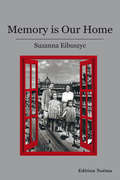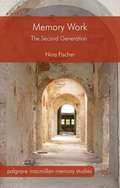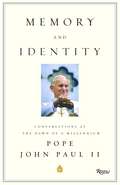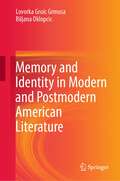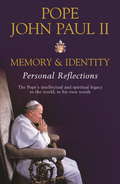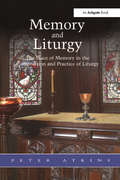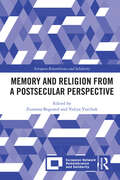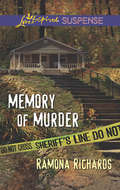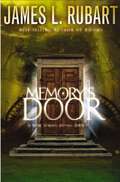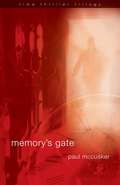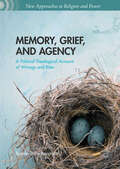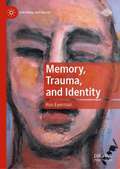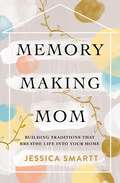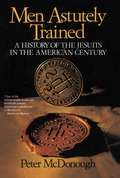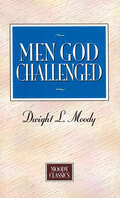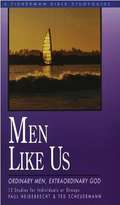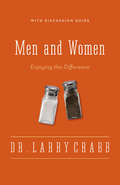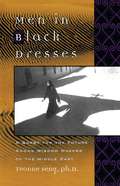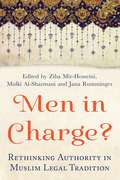- Table View
- List View
Memory Is Our Home: Loss and Remembering: Three Generations in Poland and Russia, 1917-1960s (Edition Noema Ser.)
by Suzanna EibuszycMemory Is Our Home is a powerful biographical memoir based on the diaries of Roma Talasiewicz-Eibuszyc, who was born in Warsaw before the end of World War I, grew up during the interwar period and who, after escaping the atrocities of World War II, was able to survive in the vast territories of Soviet Russia and Uzbekistan.Translated by her own daughter, interweaving her own recollections as her family made a new life in the shadows of the Holocaust in Communist Poland after the war and into the late 1960s, this book is a rich, living document, a riveting account of a vibrant young woman's courage and endurance.A forty-year recollection of love and loss, of hopes and dreams for a better world, it provides richly-textured accounts of the physical and emotional lives of Jews in Warsaw and of survival during World War II throughout Russia. This book, narrated in a compelling, unique voice through two generations, is the proverbial candle needed to keep memory alive.
Memory Work: The Second Generation (Palgrave Macmillan Memory Studies)
by Nina FischerMemory Work studies how Jewish children of Holocaust survivors from the English-speaking diaspora explore the past in literary texts. By identifying areas where memory manifests - Objects, Names, Bodies, Food, Passover, 9/11 it shows how the Second Generation engage with the pre-Holocaust family and their parents' survival.
Memory and Identity
by Pope John Paul IIIn this compelling volume, Pope John Paul II speaks for the first time on global politics. He discusses his views on freedom and democracy and speaks about the twentieth century totalitarian ideologies of communism and Nazism. Making an emphatic appeal for mankind to regard freedom "not only as a gift but a task" to be used for the common good, he calls for a dialogue between all the world's civilizations and religions. This inspiring and thought-provoking work is a unique reflection on human life, and will be admired by thinkers of all religions and nationalities.
Memory and Identity in Modern and Postmodern American Literature
by Biljana Oklopcic Lovorka Gruic GrmusaThis book discusses how American literary modernism and postmodernism interconnect memory and identity and if, and how, the intertwining of memory and identity has been related to the dominant socio-cultural trends in the United States or the specific historical contexts in the world. The book’s opening chapter is the interrogation of the narrator’s memories of Jay Gatsby and his life in F. Scott Fitzgerald’s The Great Gatsby. The second chapter shows how in William Faulkner’s Light in August memory impacts the search for identities in the storylines of the characters. The third chapter discusses the correlation between memory, self, and culture in Tennessee Williams’s A Streetcar Named Desire. Discussing Robert Coover’s Gerald’s Party, the fourth chapter reveals that memory and identity are contextualized and that cognitive processes, including memory, are grounded in the body’s interaction with the environment, featuring dehumanized characters, whose identities appear as role-plays. The subsequent chapter is the analysis of how Jonathan Safran Foer’s Everything Is Illuminated deals with the heritage of Holocaust memories and postmemories. The last chapter focuses on Thomas Pynchon’s Against the Day, the reconstructive nature of memory, and the politics and production of identity in Southeastern Europe.
Memory and Identity: Personal Reflections
by Pope Pope John Paul IIA truly historical document that leaves for posterity the intellectual and spiritual teachings of His Holiness Pope John Paul IIA truly historical document, Memory and Identity contains Pope John Paul II's personal thoughts on some of the most challenging issues and events of his turbulent times. Pope for over 26 years, he was one of the world's greatest communicators and this moving book provides a unique insight into his intellectual and spiritual journey and pastoral experience. Each chapter suggests the answer to a question which either exercised his mind or which he provoked in discussion with laymen and priests. Using the encounters at his summer residence of Castel Gandolfo where conversations took place with leading intellectuals - philosophers as well as theologians - Pope John Paul II addressed in his book many of the questions which arose from these discussions. Here he leaves for posterity an intellectual and spiritual testament in an attempt to seek the answer to defining problems that vex our lives.
Memory and Liturgy: The Place of Memory in the Composition and Practice of Liturgy (Liturgy, Worship And Society Ser.)
by Peter AtkinsMemory is a major factor in the composition and practice of liturgy. Recent research into how the brain and memory function points the way to how liturgy can best meet the needs of worshippers. In Memory and Liturgy, Peter Atkins draws on the fruits of his research into the process of the brain and our memory and applies it to liturgical worship. His extensive experience in writing and using liturgy keeps this book rooted in reality. In its ten chapters the author applies the functioning of the brain and the memory to our remembrance of God in worship; God's memory of us through Baptism; our remembrance of Jesus Christ in the Eucharist; the corporate memory of the community created through worship; the healing of memories of sin and pain through forgiveness; three aids to help us worship; the process of continuity and change in liturgy; and the connection between memory, imagination and hope. The conclusion summarizes the main practical issues. This provides a check-list for those serving on Liturgical Commissions and those involved in the teaching of the practice of liturgy. This book is a positive contribution to the ongoing search for suitable liturgical worship and music for the 21st century.
Memory and Religion from a Postsecular Perspective (European Remembrance and Solidarity)
by Zuzanna Bogumił Yuliya YurchukThe book argues that religion is a system of significant meanings that have an impact on other systems and spheres of social life including cultural memory. The editors call for a postsecular turn in memory studies which would provide a more reflective and meaningful approach to the constant interplay between the religious and the secular. This opens up new perspectives on the intersection of memory and religion and helps memory scholars become more aware of the religious roots of the language they are using in their studies of memory. By drawing on examples from different parts of the world, the contributors to this volume explain how the interactions between the religious and the secular produce new memory forms and content in the heterogenous societies of the present-day world. These analysed cases demonstrate that religion has a significant impact on cultural memory, family memory and the contemporary politics of history in secularized societies. At the same time, politics, grassroots movements and different secular agents and processes have so much influence on the formation of memory by religious actors that even religious, ecclesiastic and confessional memories are affected by the secular. This volume is ideal for students and scholars of memory studies, religious studies and history.
Memory of Murder
by Ramona RichardsThe secrets of her past could imperil her futureLindsey Presley certainly can't imagine why anyone would want her dead-though she knows she wouldn't be alive today if not for the local cop who saved her from two murder attempts. Deputy Jeff Gage has worked difficult cases, but with only Lindsey's fractured memories of a broken past to guide him, this is by far his most challenging. For Lindsey, fleeing the town she has come to call home is unthinkable. Separately, they are vulnerable, but together, Jeff and Lindsey just may stand a chance of catching a ruthless killer.
Memory's Door (A Well Spring Novel #2)
by James L. RubartThe prophecy brought them together. But the Wolf has risen, andnow their greatest battle begins.The fourmembers of Warriors Riding have learned to wage war in the supernatural, tosend their spirits inside people's souls, to battle demonic forces, and tobring deep healing to those around them.But theirleader Reece is struggling with the loss of his sight. Brandon is being stalkedat his concerts by a man in the shadows. Dana's career is threatening to buryher. And Marcus questions his sanity as he seems to be slipping in and out ofalternate realities.And nowthe second part of the prophecy has come true. The Wolf is hunting them and hasset his trap. He circles, feeding on his supernatural hate of all they standfor. And he won't stop until he brings utter destruction to their bodies . . .and their souls.". . .thisis a seriously heart-thumping and satisfying read that goes to the edge, jumpsoff, and 'builds wings on the way down.'"--Publishers Weekly review of Soul'sGate
Memory's Gate
by Paul MccuskerThe Time Thriller Trilogy delivers gripping, fast-paced mystery that intrigues and captivates through hours, seconds, and centuries. A long history of strange disappearances and unexplainable occurrences leave clues that the town of Fawlt Line may actually sit on a time fault—a portal to alternate times and unexpected time travels—a twist of fate that puts all of Fawlt Line’s citizens in serious danger. Will they find the faith to hold on to the town and time where they belong? Can truth prevail? Elizabeth thought volunteering at the Fawlt Line Retirement Center would be fun, but she quickly has second thoughts. While most of the residents are wonderful, there’s something about the place—and a strangely familiar man in a wheelchair—that gives her the creeps. When people start disappearing from the center, leaving behind cryptic notes, Elizabeth is convinced the time fault is involved. Her own time-travel adventure may be the key to solving the mystery, but can she convince the sheriff she’s telling the truth before more people disappear?
Memory, Grief, and Agency
by Sunder John BoopalanThis book argues that an active memory of and grief over structural wrongs yields positive agency. Such agency generates rites of moral responsibility that serve as antidotes to violent identities and catalyze hospitable social practices. By comparing Indian and U. S. contexts of caste and race, Sunder John Boopalan proposes that wrongs today are better understood as rituals of humiliation which are socially conditioned practices of domination affected by discriminatory logics of the past. Grief can be redressive by transforming violent identities and hostile in-group/out-group differences when guided by a liberative political theological imagination. This volume facilitates interdisciplinary conversations between theorists and theologians of caste and race, and those interested in understanding the relation between religion and power.
Memory, Trauma, and Identity (Cultural Sociology)
by Ron EyermanThis volume brings together Ron Eyerman’s most important interventions in the field of cultural trauma and offers an accessible entry point into the origins and development of this theory and a framework of an analysis that has now achieved the status of a research paradigm. This collection of disparate essays, published between 2004 and 2018, coheres around an original introduction that not only provides a historical overview of cultural trauma, but is also an important theoretical contribution to cultural trauma and collective identity in its own right. The Afterword from esteemed sociologist Eric Woods connects the essays and explores their significance for the broader fields of sociology, behavioral science, and trauma studies..
Memory-Making Mom: Building Traditions That Breathe Life Into Your Home
by Jessica Smartt<p>Be a different kind of mom. Break through the distractions and create lasting memories. <p>What’s the solution to gaining the balanced, meaningful life you desire with your family? Create traditions that bring joy and significance. Popular "Smartter Each Day" blogger and mom of three, Jessica Smartt explains why memory-making is the puzzle piece that today’s families are longing for. She highlights the tradition-gifts kids need most with 300+ unique traditions including: <p> <li>Food: Memories That Stick to Your Ribs <li>Holidays: Fall Bucket Lists, Crooked Christmas Trees, and Lingering Over Lent <li>Spontaneity: Let's Go on an Adventure <li>Faith: Why You Need the Puzzle Box </li> <p> <p>She also offers practical encouragement to modern parents to keep on adventuring—even when they are fighting distractions, are on a budget, and exhausted.</p>
Men Astutely Trained: A History of the Jesuits in the American Century
by Peter McdonoughA perceptive and provocative analysis of the transformation that swept through American Catholicism in the decades leading up to Vatican II. Captures the drama of the Jesuits confrontation with American modernity. Jokers, wisemen, failures, the brilliant and the merely bemused march through the book's pages. The Jesuits have been the carriers of a culture borne along by a fruitful and often frustrating tension between their dual commitment to ancient virtues and to the pursuit of the free play of ideas. Explains developments among the Jesuits and sets them in the larger context of the sea-changes that shook the world and the Catholic Church in the world during the mid-20th century.
Men God Challenged: Moody Classics Series (Moody Classics)
by Dwight L. MoodyHow many years has it been since you first heard the story of Daniel in the lions' den? Do you think of it merely as a child's story, one with little application for today? Almost one hundred years ago, D.L. Moody sketched the lives of Daniel and others, drawing applications to his day. Their relevance today is startling. Here again are Mr. Moody's insightful sketches of men God challenged, including:DanielEnochLotJacobJohn the Baptist
Men Like Us: Ordinary Men, Extraordinary God (Fisherman Bible Studyguide Series)
by Paul Heidebrecht Ted ScheurmannMen Like Us presents 13 studies for individuals and groups.
Men Of A Single Book: Fundamentalism In
by Mateus Soares AzevadoIn this groundbreaking work, award-winning Brazilian journalist Azevedo presents a frank and objective account of how the label of fundamentalism can be applied to religious and secular 'faiths' alike. In the 21st century, passionate and emotional attachment to a single point of view, and the rejection of all others, has become one of the main social, political, and religious issues, leading to conflicts around the globe.
Men Who Love Fierce Women: The Power of Servant Leadership in Your Marriage
by Kimberly Wagner Leroy Wagner&“Five years into &‘wedded bliss,&’ I confessed to Kim that I no longer loved her. We were stuck in a destructive relationship pattern we now refer to as the &‘fierce woman/fearful man&’ cycle, and I had lost all hope for a peaceful marriage…&” — LeRoy WagnerWhat if I&’m laid-back and my wife is… not? How can I lead when I feel emasculated? I&’m not sure I love my wife anymore. What happened?If you find yourself asking questions like these, LeRoy can relate. In Men Who Love Fierce Women, he is gut-honest about his failures and frustrations as a husband, the realizations that saved his marriage,* and the requirements God places on every husband, laid-back or not. With their insights combined, Kim and LeRoy equip men to rise up, handle conflict, love their wife, and lead their marriage, regardless of who has the stronger personality.Includes reflection questions at the end of every chapter, plus an appendix for addressing conflict. *Kim and LeRoy&’s interview on Focus on the Family, in which they discuss their marriage and Kim&’s book Fierce Women, aired twice and was voted the #1 segment of 2015, prompting the publication of this book.
Men Who Love Fierce Women: The Power of Servant Leadership in Your Marriage
by Kimberly Wagner Leroy Wagner&“Five years into &‘wedded bliss,&’ I confessed to Kim that I no longer loved her. We were stuck in a destructive relationship pattern we now refer to as the &‘fierce woman/fearful man&’ cycle, and I had lost all hope for a peaceful marriage…&” — LeRoy WagnerWhat if I&’m laid-back and my wife is… not? How can I lead when I feel emasculated? I&’m not sure I love my wife anymore. What happened?If you find yourself asking questions like these, LeRoy can relate. In Men Who Love Fierce Women, he is gut-honest about his failures and frustrations as a husband, the realizations that saved his marriage,* and the requirements God places on every husband, laid-back or not. With their insights combined, Kim and LeRoy equip men to rise up, handle conflict, love their wife, and lead their marriage, regardless of who has the stronger personality.Includes reflection questions at the end of every chapter, plus an appendix for addressing conflict. *Kim and LeRoy&’s interview on Focus on the Family, in which they discuss their marriage and Kim&’s book Fierce Women, aired twice and was voted the #1 segment of 2015, prompting the publication of this book.
Men Who Met God: Twelve Life-Changing Encounters
by A. W. TozerA. W. Tozer's Men Who Met God is a compelling survey of seven biblical figures who had the tremendous experience of walking and communing with God in some fashion—in the coolness of the afternoon, through a burning bush, in personal discussion, or by another divinely inspired method.Originally preached as a series of sermons by A. W. Tozer at Southside Alliance Church in Chicago, this compilation enlightens the mind and cuts to the heart in the way we&’ve come to expect from Tozer.May you be moved toward God as you see how men of old encountered his Awesome Presence.
Men Who Met God: Twelve Life-Changing Encounters
by A. W. TozerA. W. Tozer's Men Who Met God is a compelling survey of seven biblical figures who had the tremendous experience of walking and communing with God in some fashion—in the coolness of the afternoon, through a burning bush, in personal discussion, or by another divinely inspired method.Originally preached as a series of sermons by A. W. Tozer at Southside Alliance Church in Chicago, this compilation enlightens the mind and cuts to the heart in the way we&’ve come to expect from Tozer.May you be moved toward God as you see how men of old encountered his Awesome Presence.
Men and Women: Enjoying the Difference
by Larry CrabbIn Men & Women, bestselling author Dr. Larry Crabb maintains that men and women are different in important ways that, if understood and honored, can lead to a deep enjoyment of one another—an enjoyment that can last forever. What does it take to get along for a lifetime? According to Crabb, men and women share a deadly problem that kills good relating. The problem is this: we are committed, first of all, to ourselves. Each of us, without blushing, holds fast to an overriding concern for our own well-being. Sharing people’s stories and personal anecdotes, Crabb explores how we can turn away from ourselves and toward each other, becoming what he calls "other-centered." What does it take to get along for a lifetime? Men and women share a deadly problem that kills good relating. The problem is this: we are committed, first of all, to ourselves. Each of us, without blushing, holds fast to an overriding concern for our own well-being. Sharing people’s stories and personal anecdotes, Crabb explores how we can turn away from ourselves and toward each other, how we can become what he calls "other-centered." In Men & Women, Dr. Crabb maintains that men and women are different in important ways that, if understood and honored, can lead to a deep enjoyment of one another, an enjoyment that can last forever.
Men at Leisure
by Bruce FredericksonGodly Man series/examines men at leisure from Biblical perspective
Men in Black Dresses
by SengIf we pause long enough, we can hear, above the din of our planet's rapid globalization and technological advancement, the quiet voices of spiritual leaders from ancient faiths. Middle East historian Yvonne Seng asks, What can these modern Desert Fathers with their long history of survival advise us on the future of our planet? Her intellectual quest rapidly becomes a personal journey that turns her Western training and perceptions on their head. Men In Black Dresses takes the reader behind the walls of desert monasteries, Sufi enclaves, ancient cathedrals and mosques -- where the author knocks, uninvited, and waits for the wise men to allow her in. Once inside, they discuss the universal concerns of the environment and the Internet, the building of a global community, and the education of coming generations, as well as the state of the human spirit.
Men in Charge?: Rethinking Authority in Muslim Legal Tradition
by Mulki Al-Sharmani Jana Rumminger Ziba Mir-HosseiniBoth Muslims and non-Muslims see women in most Muslim countries as suffering from social, economic and political discrimination, treated by law and society as second-class citizens subject to male authority. This discrimination is attributed to Islam and Islamic law, though it varies considerably in its impact, according to both class and region. Since the late 19th century there has been a mass of literature tackling this issue, some from a feminist or human rights perspective, some taking the form of an apology for Islamic law.Recently, exciting new feminist research has been challenging gender discrimination and male authority from within Islamic legal tradition, and this book presents some important results from that research. The contributors all engage critically with two central juristic concepts, rooted in the Qur'an, that lie at the basis of this discrimination, concepts which place women under male authority. One refers to a husband's authority over his wife, his financial responsibility towards her, and his superior status and rights. The other is male family members' right and duty of guardianship over female members (e.g., fathers over daughters when entering into marriage contracts) and the privileging of fathers over mothers in guardianship rights over their children.The contributors, scholars from different disciplines and backgrounds, were brought together by Musawah (Arabic for equality), a global movement for equality and justice in the Muslim family, launched in 2009. Musawah aims at producing new knowledge to help build grass-roots movements and to mobilize for change.
